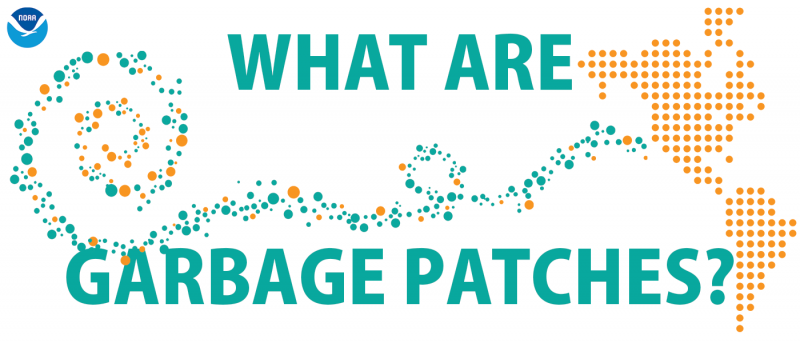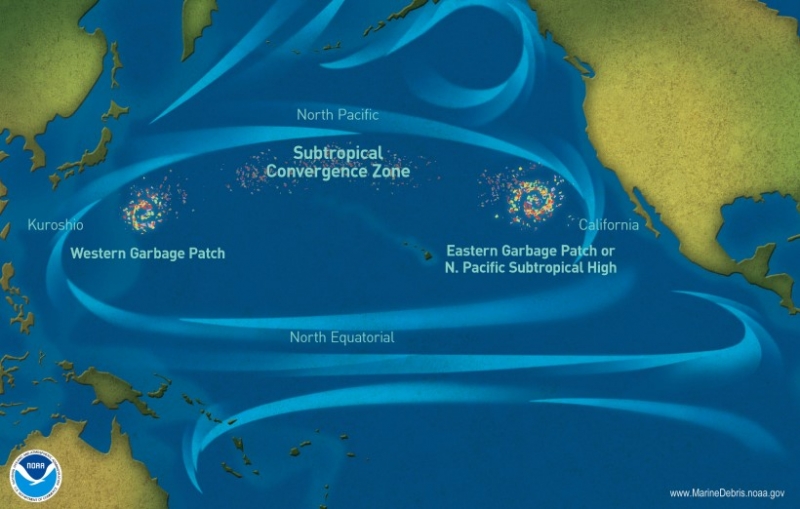By: Amanda Laverty, Communications Specialist with the NOAA Marine Debris Program
We’re spending March talking all about marine debris and its types, sources, impacts, and solutions. Tune in throughout the month to learn more about this important topic and how we can all be part of the effort to make our lives and our ocean #DebrisFree.

Garbage patches are areas of increased concentration of marine debris that are formed from rotating ocean currents called gyres. The most publicized garbage patch is the Great Pacific Garbage Patch, located in the North Pacific Subtropical Gyre in the northern Pacific Ocean. However, there are actually several garbage patches located in gyres around the world!

How big are they? Because gyres are dynamic, the size of these concentrated areas is constantly changing, making it extremely difficult to estimate the size of garbage patches. In addition, although these areas have greater amounts of marine debris, they are not forming “islands of trash.” Instead, this debris is continually mixing and is spread throughout the water column, from the surface all the way to the ocean floor.
What kind of debris do we find? Debris in the garbage patches is primarily made up of plastic pieces less than five millimeters in size, called microplastics. Many of these microplastics are the result of larger plastic debris breaking into smaller pieces due to exposure to environmental elements such as sunlight, wind, and waves. Other microplastics are manufactured at this size, such as microbeads found in some personal care products or microfibers from synthetic clothing. With such small debris making up the majority of the garbage patches and the constant movement of this debris, it’s possible to sail through a garbage patch without even realizing it!
Can we clean them up? Since the debris in these areas is so small in size, is constantly being mixed, and is located throughout the water column, removing it proves to be very difficult. For this reason, we generally focus removal efforts on shorelines and coastal areas, before debris has the chance to make it to the open ocean.
What can we do? Though removal is one important piece of the puzzle, prevention is ultimately the key! If we consider an overflowing sink, it’s obvious that the first step before cleaning up the water on the floor is to turn off the faucet — that is what we mean by prevention. By working to prevent marine debris through education, outreach, and making an individual effort to reduce our own contribution, we can put a stop to this global concern.
Want to learn more about the garbage patches? Check out this blog post or visit the NOAA Marine Debris Program website where you can find more information as well as our Trash Talk video on the Great Pacific Garbage Patch.



Ultimately the EPA IS RESPONSIBLE!
ACCOUNTABILITY, RESPONSIBILITY, NO ONE IS TAKING EITHER!
Pointing Fingers, I only have a Job, get paid hourly.
That's Not my Responsibility!